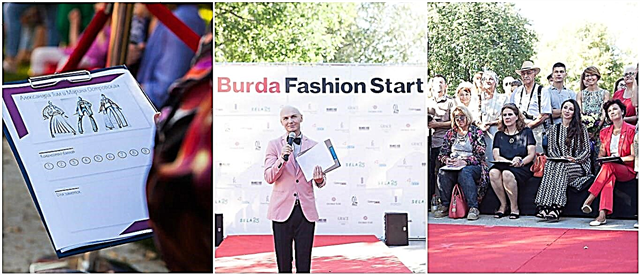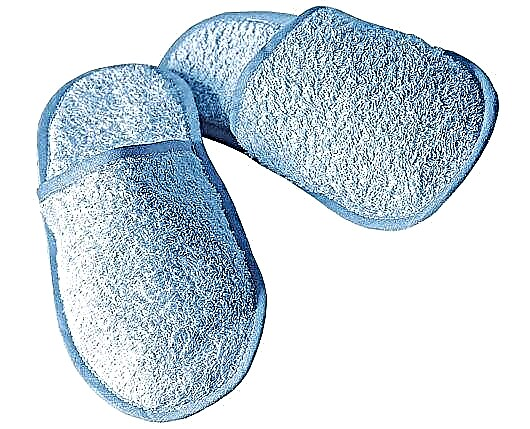Share
Pin
Tweet
Send
Share
Send
These romantic flowers bloom not only in the gardens. You can create them with your own hands on fashionable outfits and accessories!

ORIGINAL NECKLACE WITH ROSE BOUQUETS
Nobody has such a necklace! Finished silk roses are assembled in small bouquets and are attached to a flexible cord with a wire frame inside with a wire (photo above and right).

CLASSIC CONTRAST
Red and black, a romantic rose and a strict "male" strip - the marlene trouser belt is decorated with an applique made of dark red flower. If desired, you can embroider the motive yourself (photo on the left).

DECORATIVE LEATHER BELT WITH PATTERN
The remains of the skin can be easily and quickly turned into an extravagant corset belt (photo on the right).
Belt length 70 - 75 - 80 - 85 cm
YOU WILL NEED
Flap genuine leather nappa size. OK. 40 x 40 cm; elastic tapes 1.30 - 1.40 - 1.50 - 1.55 cm long, 4 cm wide and the same length and 3 cm wide; 4 punching buttons; 1 finished application of roses; glue stick.
Paper pattern: make a longitudinal strip (one of them with applique) 18.5 cm long, 7 cm wide. Bevel the corners, see the technical drawing of the model, so that the length of the strip at the edges is 16 cm.
CUT
Nappa leather
■ For the made paper pattern, cut out 4 details of the longitudinal strips;
■ Cut 4 fastener strips 12 cm long and 5 cm wide.
Attention: Cut 2 longitudinal strips and 2 fastener strips with allowances for seams around the perimeter of a width of 1 cm, and cut the remaining strips without allowances.SEWING
■ Cut elastic tape 4 cm wide into 4 parts 32–34–37–38 cm long. Fold the strips in pairs, and then cross the pairs of strips. Glue the ends of the strips to two planks (longitudinal) without allowances from the inside.
■ Cut the elastic tape 3 cm wide into 8 parts: 4 parts 16.5–17.5–18.5–19.5 cm long and 4 parts 16–17–18–19 cm long. Fold the bands into two groups of 4 stripes, while in each group both short stripes are between long stripes. Glue the front ends of each group of strips to two planks (longitudinal, for applications) without allowances from the wrong side with an interval of 1.5 cm. Glue the open ends of each group of strips to fasteners without any allowances from the wrong side.
■ Place planks with allowances under the appropriate planks without allowances, glue to the wrong side, glue with a glue stick. From the front, stitch the trims around the perimeter to the edge. Cut allowances close to stitches. Stitch the longitudinal strips in the middle with two parallel lines.
■ On the slats for the fastener, punch in the middle of the button at regular intervals. Glue the finished application on one of the strips below (see the technical drawing and photo of the model).

SHOULDER BAG WITH SEPARATE WALLET OR POCKET
This bag made of nappa leather can be sewn on its own - it can be cut out without a special pattern and sewn very quickly. A purse or pocket with a rose embroidered on a sewing machine or manually is attached to the handle of a bag with a snap hook.
Bag Size: 25 x 40 cm
YOU WILL NEED
Nappa leather with a total area of approx. 8 sq. ft (1 sq. ft. = 30 x 30 cm); non-woven LE 420; 1 metal zipper 50 cm long; 1 carabiner clasp 1.5 cm wide; 1 metal ring diam. 1.5 cm; adhesive for textiles; glue stick; thick cardboard.
For embroidery on a sewing machine: card with a motif for embroidery "Rose"; flizelin N 54 film layer (see the description at the end of the article); Threads for machine embroidery in different colors.
Tip: a rose can also be embroidered manually.
Allowances: for seams - 1 cm, for upper cuts - 2 cm.CUT
■ 2 main parts of the bag 25 cm long and 40 cm wide;
■ intermediate part 86 cm long and 10 cm wide;
■ 2 handles 60 cm long and 6 cm wide, finished 3 cm;
■ a small handbag with a width of 6.5 cm and a length of 18 cm, finished 9 cm, cut out without allowances;
■ a strip for the handle of a small handbag 25 cm long and 2 cm wide, cut out without allowances.
Gasket: duplicate the gasket of the handle.
SEWING
■ On each main part, lay 2 cm along the side cuts from the upper cut (allowance for the seam), then 2 cm more and put a mark for the seam for attaching the intermediate part. Stitch the intermediate part to the main parts, always starting and ending the line at the mark and leaving allowances for short sections of the intermediate part protruding beyond the upper ends of the seams.
At the bottom corners of the bag, cut into the stocks of the intermediate part. Spread the allowances of each seam on both sides of the seam and glue with textile glue. To allow short cuts of the intermediate part to unscrew to the wrong side and stick.
■ Unscrew allowances on the upper cuts of the main parts of the bag on the inside and glue with glue stick.
Glue the zipper under the upper edges of the main parts of the bag so that the cloves are not visible and the ends of the zipper protrude beyond the ends of the bag by the same length. Stitch the zipper to the edge.
From the skin flap, cut 2 squares with a side of 3 cm. On each square, round 2 corners and stick the squares on the ends of the zipper with a glue stick. Under the glued squares, place a larger area on the part and stitch the squares along the rounded edges to the edge. To cut off excess skin close to a line.
■ Fold each handle lengthwise, face inward, and grind longitudinal sections. Fold the handle so that the seam runs along the line of the middle of the inner half of the handle, place the seam allowances on both sides of the seam and stick with textile glue. Turn the handle out. Tighten the ends of the handle. Glue the ends of each handle with a glue stick to the main part of the bag 8 cm below the top edge of the bag and at a distance of 10 cm from the side seams. Stitch the ends of the handle around the perimeter with a rectangle and diagonally.
■ For the bottom, cut a rectangle of the size from thick cardboard. 40 x 10 cm and put it in the bag.
■ Stick the front of a small bag onto a large sheet of non-woven film-reinforced plastic and pull it into the embroidery frame. Machine embroider. Or hoop and embroider manually.
■ On the handle strip of the small handbag, unscrew the longitudinal sections to the wrong side, 5 mm wide, and glue with textile glue. Cut the handle into 2 parts - 16 cm long and 9 cm long. Pass the long part of the handle into the snap hook. And the short part of the handle is in a metal ring. Place the ends of each part of the handle on top of one another. Fold the handbag in half inside out and sew the side sections to the edge. Insert the ends of the handles into handbags and stitch them on the edge.WHAT IS FLISELINE N 54 FILMOPLAST
(Vlieseline H 54 Filmoplast by Freudenberg)
This is an adhesive non-woven fabric designed to stabilize fabric when embroidering on a sewing machine. It adheres without ironing and is removed at the end of embroidery without a trace.
This type of non-woven fabric can be used repeatedly, so do not discard the paper side of the non-woven fabric removed before embroidery. And at the end of work, glue back.
Material prepared by Elena Karpova
Share
Pin
Tweet
Send
Share
Send









